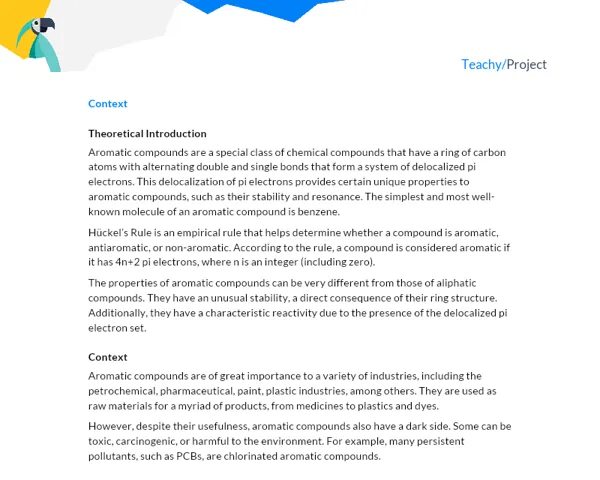Contextualization
Theoretical Introduction
In the study of Chemistry, one of the most important foundations is the understanding of chemical equilibrium. One of the developments of this concept is the Solubility Product, or Ksp, which refers to the solubility of a solute in a given solvent at equilibrium. That is, the maximum concentration that a solute can reach in the solvent without precipitation.
The calculation of Ksp is done by relating the concentrations of the ions that make up the compound in a saturated solution. Ksp is a specific equilibrium constant that relates the concentrations of a solvent and its ions in a solution. Each compound has a specific Ksp at a certain temperature, which means that the value of Ksp can vary according to temperature.
Furthermore, the presence of common ions can also affect the value of Ksp, known as the common ion effect. This effect refers to the decrease in the solubility of a solute in the presence of an ion common with the solute.
Importance and Contextualization of Ksp
Understanding Ksp is essential for various applications, such as in the food, pharmaceutical, petrochemical industries, among others. Consider, for example, the manufacturing of medications: it is important to know to what extent a compound will dissolve to ensure the effectiveness of a medicine.
Moreover, Ksp is also crucial to understand environmental phenomena. An example is the solubility of gases in the oceans, which has direct implications on climate change and marine life. Thus, the study of Ksp is an integral part of our daily lives, even if we do not always realize it.
Practical Activity
Activity Title: Exploring the Solubility Product (Ksp)
Project Objective:
The objective of this project is to understand and apply the concept of Solubility Product (Ksp) in a practical context, also exploring the common ion effect.
Students should form groups of 3 to 5 members, and the project will last approximately one month, with an estimated 5 to 10 hours of work for each student.
Detailed Project Description:
In this project, students will conduct an experiment to determine the Ksp of a slightly soluble compound in water, for example, Calcium Sulfate (CaSO4). Additionally, they will investigate how the presence of a common ion (in this case, the SO4²- ion) affects the solubility of the compound.
Required Materials:
- Saturated solution of Calcium Sulfate (CaSO4).
- Sodium Chloride (NaCl) solution.
- Sodium Sulfate (Na2SO4) solution.
- Beaker, Erlenmeyer flask, or another container for the dissolution.
- Analytical balance.
- Pipettes and burettes for precise volume measurements.
- Magnetic stirrer (optional).
Detailed Step-by-Step for Activity Execution:
- Prepare a saturated solution of CaSO4, allowing it to rest for a sufficient time to reach equilibrium.
- Carefully remove the solution from the top, without disturbing the sediment, to a new container. This will be your starting point.
- Titrate this solution with the Na2SO4 solution. Record the volume of Na2SO4 needed to precipitate all CaSO4.
- Calculate the Ksp of CaSO4 from the data obtained in the titration.
- Repeat the experiment, but this time add NaCl to the initial CaSO4 solution before starting the titration. Observe and record the differences in the results.
- Discuss how the presence of the common ion (SO4²-) affected the solubility of CaSO4.
After conducting the experiment, students should prepare a report containing:
-
Introduction: Description of the Solubility Product (Ksp) concept and its relevance. It should also present the experiment's objective and its contextualization.
-
Development: Detailed description of the experiment conducted, with explanations about the titration and the Ksp calculation. It should also include the presentation and discussion of the results obtained, as well as the influence of the common ion.
-
Conclusion: Reflections on the learning obtained from the experience, the applicability of the concepts studied, and how the results align with the theory.
-
Bibliography: References to the study materials used, including books, websites, videos, among others.
Project Deliverables:
- Group experiment execution according to the detailed instructions.
- Preparation of a report per group, following the indicated structure (Introduction, Development, Conclusion, Bibliography).
- Oral presentation of the results and conclusions to the entire class.
The project evaluation will be based on the correct execution of the experiment, report elaboration, and the quality of the oral presentation. The collaboration among group members, organization, time management, as well as the correct application of theoretical concepts, will also be evaluated.

